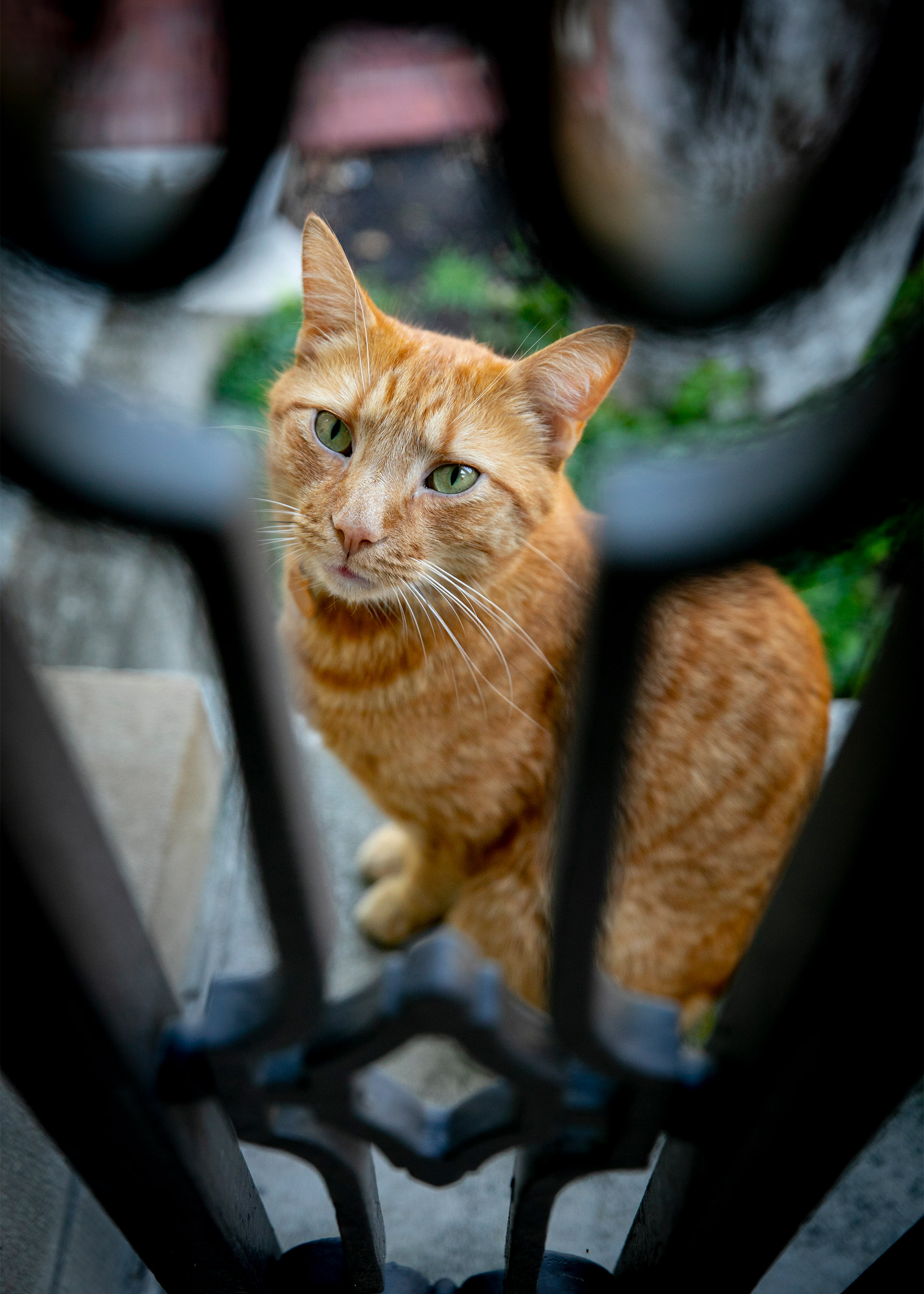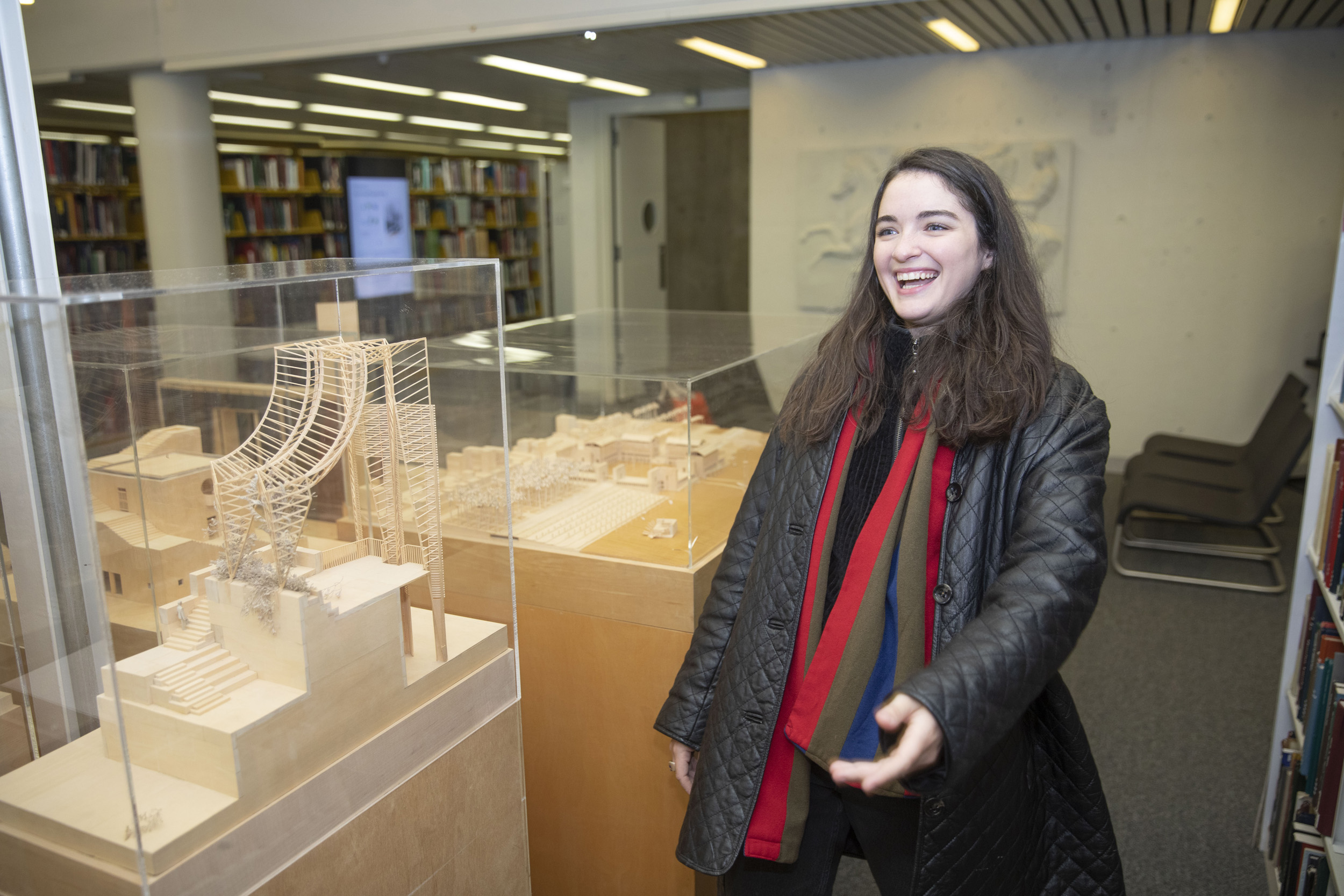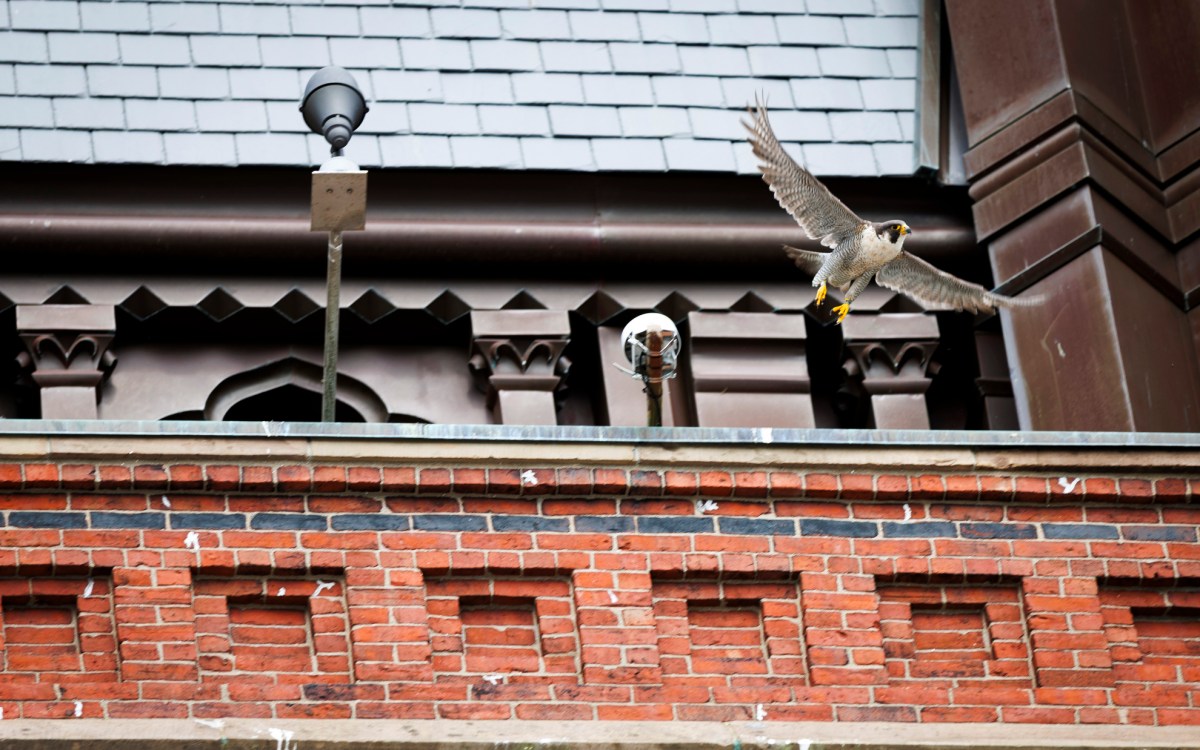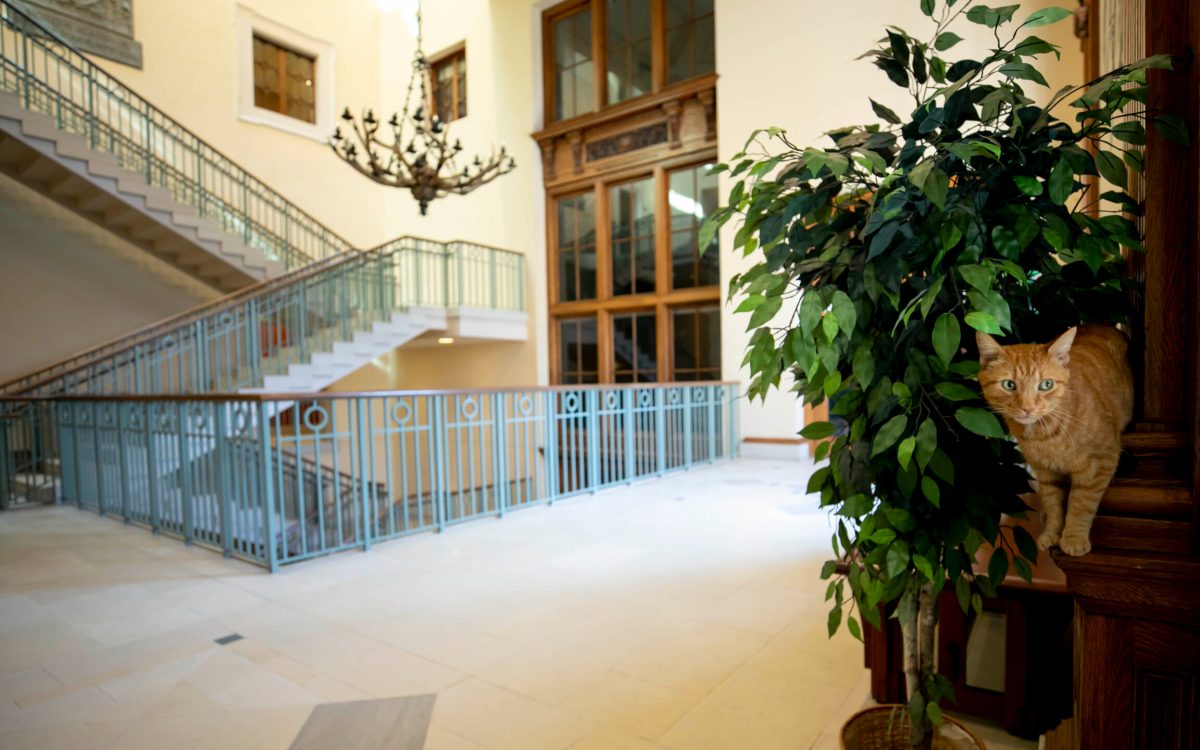Maybe it’s Remy’s world, and the rest of us just live in it
For Wintersession students, 8-year-old tabby provides lessons in empathy

Remy spends his days touring Harvard and its buildings.
Harvard file photo
Remy the cat has been a fixture of the Harvard campus for years. An official resident of a nearby Cambridge home, the 8-year-old orange tabby has taken to wandering through academic buildings and libraries, making friends with students and faculty alike.
He’s also grown a sizable social media following — thousands of followers wait for snaps of him submitted by users of Instagram, Facebook, and Twitter. The deeper implications of that following, along with questions about the influence of the physical campus on Remy’s everyday movements, were among the issues that students at the Graduate School of Design explored in the four-week class “The Psychogeography of Remy.”
Led by the graduate student Sonia Sobrino Ralston, who is pursuing a master’s in landscape architecture, the Wintersession course gave students a chance to broaden their perspectives outside of design fundamentals.
“I thought Remy would be a great way to think about all the different beings that we live with,” Ralston said. “To try to break down some of the main areas of research that are happening in designing for nonhuman animals.”

“I thought Remy would be a great way to think about all the different beings that we live with,” said Sonia Sobrino Ralston, who taught “The Psychogeography of Remy” during Wintersession.
Kris Snibbe/Harvard Staff Photographer
First, students considered what they knew about Remy, and how they came to know it. In most cases, social media was a big part of the answer.
“With this class, I was thinking about how most of the time that you interface with Remy is never going to be in-person,” Ralston said. “That’s the case for a lot of different animals.”
Most of us rely on ecologists and biologists for lessons about wildlife, she noted. The average person may never see an elephant in the wild, but knows and cares about the animals because of scientists and environmentalists. A designer may not be familiar with every creature in an ecosystem, but every interaction with the design is worth thinking about.
From there, the class discussed how animal life can encourage empathy in design.
“Trying to think about how animals or nonhumans might react to certain design decisions is also just a really good way to try to encourage people to apply that kind of empathetic thinking to any design situation,” Ralston said. “We need to be thinking about all the different kinds of ecologies that would be affected by [a design].”
Jessica Shires, an administrator in the History and Literature Department, runs Remy’s Instagram and Facebook accounts, and can testify to the strength of the bond between the cat and his social following.
“I hear from fans of his who’ve never even met him in real life who seem to have a deep sense of investment in his well-being,” she said.
In their final session, students were asked to imagine the possibilities (and compromises) of Remy-oriented design. What if the cat had a collar with a Harvard ID that could open doors? What if he had little cat-sized staircases running through building floors? Would there be a benefit to Remy but a detriment to the humans using the space?
“The main takeaway is just that thinking about how we interact with or how we engage with any kind of person, being, or place that we design for requires some degree of thinking about your own position within it, and trying to approach that with a really empathetic and well-thought-through and generous view,” Ralston said.





